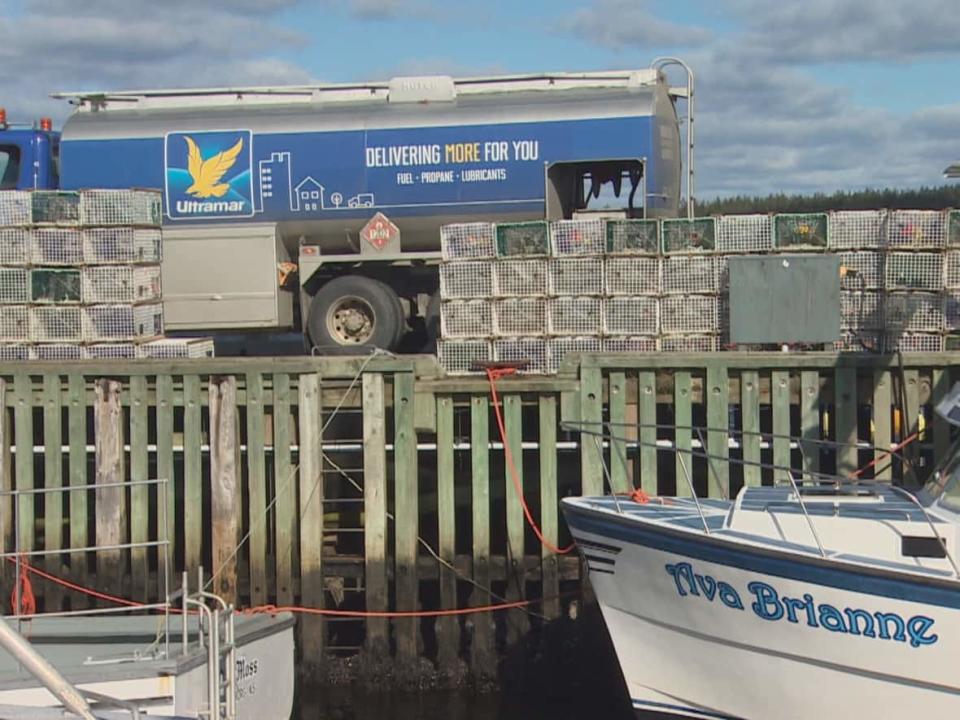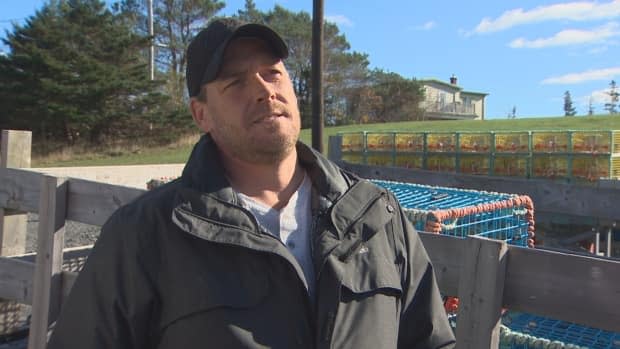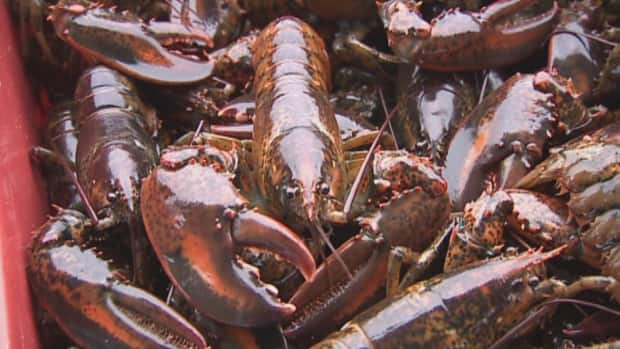N.S. lobster fishery braces for a downturn as inflation hits

Canada's most lucrative commercial fishery is bracing for a downturn later this month when the southwestern Nova Scotia lobster fishery opens with lower wharf prices and higher costs.
The fishery is worth hundreds of millions of dollars each year and is an important piece of the Nova Scotia economy.
Fishermen are seeing the downside of a cyclical industry at a time when inflation has sent their input costs skyrocketing.
Geordy Bennett, a lobster boat captain in Riverport on Nova Scotia's south shore, said he just spent $2,900 to fill his boat, Ava Brianne, with diesel at $2.03 per litre.
"And it will probably be more next time," Bennett said.
Interest rates and the cost of bait and traps are also up.
Price changes and rising fuel costs
"It's phenomenal. It's doubled and we haven't left the wharf," Bennett said on a blustery day preparing traps for the upcoming season.
"The biggest concern is the price change and fuel cost. If we don't make a profit, it's not worth setting the gear."
Bennett and the hundreds of other fishermen in Lobster Fishing Areas 33 and 34 are watching prices sink as economic worries dampen demand in the U.S.

When the season opens on Nov. 28, the price is expected to be around $6 per pound, down from the $17 fishermen were getting at the peak.
The issue for those who bought in recently is whether the lobster prices will carry the cost of debt.
"I'm beyond concerned," said Chad Parks, a captain in his mid-40s who fishes out of Lunenburg and owns the Nowe or Never.
Captain says cost of running his vessel doubled
He borrowed $700,000 three years ago to buy the boat and licence from the captain of the vessel where he was a crew member.
Parks makes an annual $50,000 loan payment to the provincial government's Fisheries and Aquaculture Loan Board.
He has also put a new engine on a line of credit.

He said everyone's situation is different. Some fishermen are in a better situation, some are worse off than him.
The cost of running his boat will jump from $100,000 to "well over" $200,000 with bait costs, fuel and insurance, he said.
"A $6 lobster isn't going to cut it, it's not going to pay the bank, the loan board, and we're probably going to have to look at different ways of running our daily operation."
Increased loan rates
That will mean holding lobster in storage in hopes of higher prices, reducing trips, or even crew.
He is aware that fishermen have done well in recent years and everyone is coping with inflation.
"The difference here is that we're sole proprietors, so we have to put ourselves in a mega personal debt in order to fish. You have to service your mortgages, no different than your house. If you don't pay your house mortgage for said number of months, you're going to get a phone call or a letter or someone's going to show up, and we're no different in that sense," he said.

Interest rates charged by the Nova Scotia Fisheries and Loan Board doubled or nearly doubled between October 2021 and October 2022.
Open rates for a 10-year loan rose to 7.35 per cent from 3.95 per cent. Closed loans from one to five years are up to 5.8 per cent from 2.7 per cent.
The loan board provides flexibility like interest-only payments and deferrals, said Steve Craig, the provincial minister of fisheries and aquaculture.
'We're here to help,' provincial minister says
Craig acknowledged concerns about the impact of higher costs this season.
"All I ask is that the fisheries folks — we have about 1,000 or so of them who do have loans with the board — approach the loan officer and arrange something. If they find themselves in difficulty, we're there to help," he said.
Brad Murphy, RBC's vice-president of commercial financial services for central and western Nova Scotia, told CBC News "it's impossible" to know how the season will unfold.

"A number of our clients have said they predict it will be more like a 'regular' year for harvesters, in that they expect wharf prices will be closer to the industry norm versus the high prices of the past two years. Others have a more pessimistic view," he said.
Murphy said the industry is quite sophisticated and many harvesters are adept at planning for downturns.
Tough decisions ahead
"If difficult situations do arise, our approach is to work with clients individually to offer advice and solutions specific to their circumstances. Businesses in the lobster harvesting industry are very diverse, and therefore there's no one-size-fits-all solution," he said.
Back in Lunenburg County, Bennett predicts fishermen will exit the business this year.
"I think you are going to see a lot of outfits go for sale," he said.
Parks said he'll have to make some tough decisions.
"Whether we fish or not, or how often we fish," he said. "There's certainly the option of not going as far to burn less fuel. There's a possibility to take less crew, which is less money in the economy."
MORE TOP STORIES

